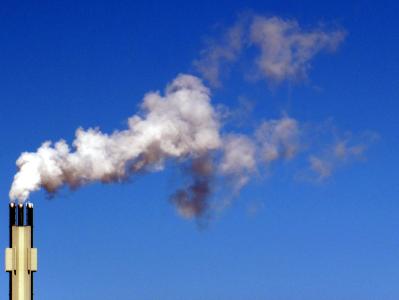
Carbon Footprint
of Products
and Organizations
Measure, reduce, and communicate your environmental impact.
The Carbon Footprint is now one of the most widely recognized and valued sustainability indicators by both economic operators and consumers.
Pegaso Management supports companies through a technical and consultancy service for calculating greenhouse gas emissions at both the product and organizational level, in accordance with internationally recognized standards.
What is the Carbon Footprint?
The Carbon Footprint represents the amount of greenhouse gas (GHG) emissions generated by a product, service, or organization. It is expressed in terms of carbon dioxide equivalent (CO₂eq) and helps quantify the contribution of an activity to climate change.
For products, the carbon footprint is calculated using the Life Cycle Assessment (LCA) methodology, which considers all stages of the product’s life cycle: from raw material extraction to production, transportation, use, and end-of-life disposal.
For organizations, the carbon footprint measures both direct (from sources owned or controlled by the organization) and indirect emissions (e.g., from purchased energy or supply chain activities) associated with the overall functioning of the organization.
Calculating your carbon footprint is the first step toward implementing emission reduction and offsetting strategies, improving operational efficiency, and enhancing the sustainability of business activities.

Difference Between Product and Organizational Carbon Footprint
Relevant Standards and Guidelines
- ISO 14067:2018: Establishes principles, requirements, and guidelines for quantifying and reporting the carbon footprint of products, based on LCA studies. It considers emissions throughout the full life cycle and expresses them in CO₂eq.
- ISO 14064‑1: Specifies requirements for the quantification and reporting of greenhouse gas (GHG) emissions and removals at the organizational level. It defines principles, processes, and controls for designing and managing GHG inventories.
- GHG Protocol: An international standard developed by the World Resources Institute and the World Business Council for Sustainable Development, widely used for voluntary reporting of organizational emissions and for distinguishing between Scope 1, 2, and 3 emissions.
What’s the Difference Between Product and Organizational Carbon Footprint?
The Product Carbon Footprint (PCF) and the Organizational Carbon Footprint (OCF) differ in both scope and focus of the analysis:
- Product Carbon Footprint (PCF)
Governed by ISO 14067:2018, this approach focuses on the GHG emissions associated with a single product across its entire life cycle, using the Life Cycle Assessment (LCA) methodology. It helps identify the most impactful stages and implement actions to reduce emissions related to specific goods or services. - Organizational Carbon Footprint (OCF)
Governed by ISO 14064‑1, this analysis quantifies the total GHG emissions from all company activities, including energy consumption, production processes, transport, and waste management. It provides guidance for designing and verifying GHG inventories at the organizational level.
How is the Carbon Footprint calculated?
In accordance with the LCA methodology, the product study is structured into four main phases:
- Definition of the functional unit and system boundaries
Determine which product or service is being analyzed and which life cycle stages are included (cradle-to-grave or a specific phase). - Inventory analysis
Collect data on inputs and outputs for each stage (raw materials, energy, transport, use, end of life). Emissions are limited to the "climate change" impact category. - Emission calculation
Convert the measured flows into GHG emissions using emission factors and sum the contributions to obtain the total Product Carbon Footprint (PCF). - Interpretation and improvement
Identify the most impactful stages and develop emission reduction strategies (e.g., energy efficiency, use of lower-impact materials).
How to Obtain Product Carbon Footprint (PCF) Certification
- The organization prepares the LCA study focusing on the "climate change" impact category in accordance with ISO 14067.
- A Certification Body performs an evaluation against ISO 14067, including both document review and on-site verification.
- Upon successful completion, the organization receives a Certificate with Usage License, enabling it to declare the specific product's Carbon Footprint and use the certification logo.
The main phases of Organizational Carbon Footprint calculation are:
- GHG Inventory
Develop a greenhouse gas inventory by classifying direct emissions (Scope 1), emissions from purchased energy (Scope 2), and indirect emissions across the value chain (Scope 3). - Data collection
Gather data on energy consumption, raw materials, production processes, transport, and waste. Estimate emissions using recognized emission factors. - Quantification
Apply the methodologies defined in ISO 14064‑1 or the GHG Protocol to calculate total emissions in CO₂eq. - Reporting and verification
Prepare a complete report and submit it for independent verification to ensure data reliability.
How to Obtain Organizational Carbon Footprint (OCF) Certification
- The organization conducts the GHG inventory in accordance with ISO 14064‑1.
- A Certification Body evaluates the GHG statement against ISO 14064‑1, including both document review and on-site verification.
- Upon successful completion, the organization receives a Verification Statement issued by the Certification Body.

The Benefits of Carbon Footprint
Measuring the carbon footprint offers multiple benefits for companies and their products:
- Increases the company’s green reputation and strengthens brand credibility and reliability with customers, suppliers, and stakeholders.
- Provides an environmental qualification recognized at both European and international level, easily understood by all interested parties.
- Enables the identification of improvement opportunities through constant monitoring of greenhouse gas emissions along the value chain.
- Facilitates clear and transparent communication of environmental performance, based on reliable and objective data.

How do we help you calculate your Carbon Footprint?
Pegaso Management offers a complete service for the quantification and measurement of the carbon footprint, both at product and organizational level:
- We support you through every phase of the process: from the LCA calculation and preparation of the related reports to the achievement and maintenance of the product carbon footprint certification (UNI EN ISO 14067).
- We assist you in developing the GHG inventory and provide guidance throughout the certification process, up to the achievement and maintenance of the organizational carbon footprint certification (UNI EN ISO 14064-1).
- We help you identify improvement opportunities and define emission reduction plans along the value chain.
- We assist you in communicating your environmental performance: drafting reports and environmental declarations, supporting responsible communication (green claims), and providing staff training.
Thanks to our experience, we guide your company through every stage of the process, ensuring concrete results and regulatory compliance.
Related services
Discover some of our sustainability services that can help you improve your environmental, social, and governance performance:
ORGANIZATION
- Sustainability Report (CSRD)
- Sustainable Supply Chain Management & Qualification
- Management Systems (Quality, Environment, Energy e Security)
- Corporate Social Responsibility (CSR)
PRODUCT

FAQ
Who needs to calculate their carbon footprint?
Measuring the carbon footprint is voluntary but increasingly requested by investors, clients, and regulations. Large listed companies and SMEs with a high environmental impact are adopting these practices to improve transparency and competitiveness.
Which standards should I follow?
For organizational carbon footprint, the applicable standards are ISO 14064‑1 or the GHG Protocol. For product carbon footprint, the standard is ISO 14067. Both provide internationally recognized guidelines.
How long does a carbon footprint project take?
The duration depends on the complexity of the organization or product and the availability of data. On average, it takes 3 to 6 months for medium-sized companies, including data collection, calculation, and verification.